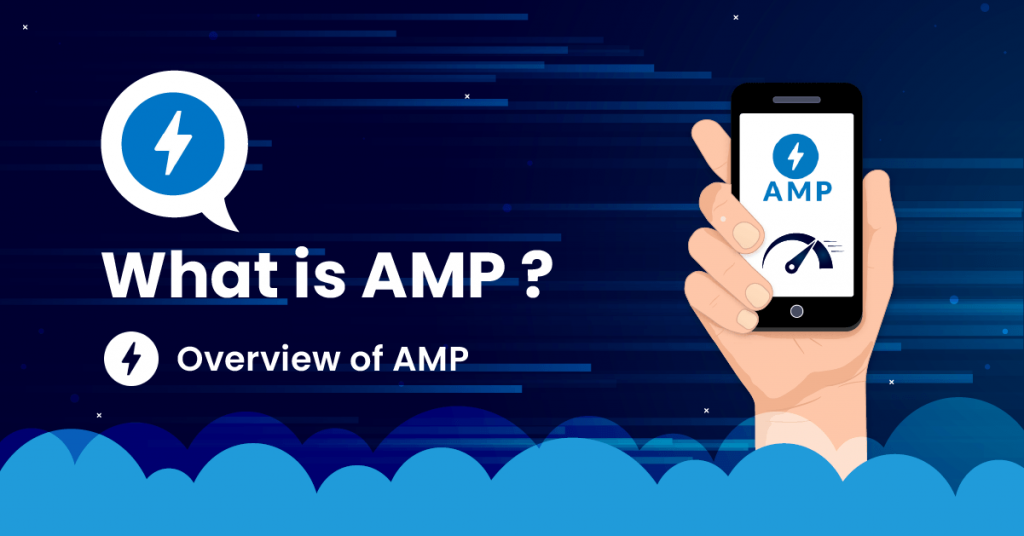Accelerated Mobile Pages (AMP) is an open-source project developed to enhance web page performance for mobile devices. Google and Twitter had initiated the project.
The underlying technology AMP helps the smartphone and tablet users to load lightweight pages faster. With more and more people now mainly using mobile devices as their primary computers, the skill has now become extremely important.
AMP uses a stripped-down version of HTML to increase the speed and functionality of its web sites. AMP can not use some tags which function for regular web page code. A minimal version of CSS is required; images only load when the user scrolls to their position and is not supported in the application. AMP includes a small library of JavaScript.
Table of Contents
Benefits of AMP?
1. Faster landing pages typically result in more conversions, and AMP helps you to create fast-loading pages.
2. AMP landing pages also combine speed and smoother loading to give people much better experience on the landing pages.
3. For your Quality Score and Ad Grade, landing page experience is an essential factor.
Working of AMP
AMP loads fast since it’s designed for speed. Search engines have a more comfortable (and thus quicker) time to interpret AMP HTML because it is more streamlined and specifically designed to help developers avoid common coding problems that lead to slow page loads.
Far better, it can support AMP pages directly from the Google AMP Cache. Google will mainly choose to serve the cached copy of the landing page wherever possible, which provides the fastest loading. If you are unable to help from the cache (due to function inconsistency or other technical reasons), your web server must load your AMP landing page.
It is okay to apply the AMP concepts in the new Google Ads experience by building AMP HTML ads. These ads allow you to deliver ad experiences across all channels quicker, lighter and safer. You can also display AMP HTML ads on AMP and non-AMP sites
Why AMP Necessary?
Google preserves most AMP pages, but publishers and third parties can also retain these pages. AMP pages provided in Google search, according to Google, used a 10th of the regular pages data and, as a rule, were loaded in under a second.
When considering these considerations, the option of adopting AMP for your website should seem obvious:
- Web-page level is a factor in Google’s mobile and desktop index rankings.
- A 1-second delay in web page speed may reduce conversion by up to 7 percent.
- AMP is rumoured to be a ranking factor in its mobile-first index (Google created AMP)
While many webmasters are uncertain about mainly using AMP on their website. But AMP projects are still not fully developed, and webmasters who have had difficulty integrating AMP correctly into their site continue to discuss concerns.
Initially, AMP branded pages were launched to compete with the Instant Articles from Facebook and used only on mobile devices for news carousel tests. Nowadays, AMP evaluations are distributed throughout the results of organic searches, although you may not know it as a consumer.
How can you customize AMP pages
Webmasters can customise AMP code by using Google Search Console or the HTML to make it more flexible and trackable. Webmasters can update their AMP cache using the request for a “check-cache.”
Pros & Cons of AMP
Pros of AMP:
- Improved Mobile-First Gen Rank
- Improvement occurs too fast!
- The carousel is horizontal, allowing users to scroll horizontally across AMPs without ever having to scroll downwards.
- It occurs for large, high-traffic searches, but as the algorithm continues to learn, more and more AMP results may be pulled out.
- Beware though that the AMP carousel may not be permanent like other search apps.
Cons of AMP:
- Mobile pages drastically speed up by reducing flashy extras but it puts a strain on the branding and style.
- Serving Cached Pages One way that AMP allows the loading of pages so easy is by allowing Google to provide users with a cached version of an AMP-enabled page.
- JavaScript & CSS Limitations AMP provide very little of branding and individuality, for the most part.
- That’s mainly because when web designers use JavaScript, and to a lesser degree, CSS, load times suffer greatly.
- Google keeps the pages that appear in search results, so you don’t actually represent the material you originally created–it’s just a copy that’s cached and stored somewhere else.
- Tracking issues AMP don’t fit with the monitoring you have already carried out. They are stored and monitored differently than regular websites, except those ready for mobile access.
- Solutions are expected to emerge, but at the moment monitoring takes considerable effort and resources that you do not have generally available.
Mobile search is just as important now as desktop searching; with advanced phone technology, people can do more from their phones than ever, including shopping and searching for services.
Google’s AMP greatly improves online efficiency, puts you in the view of more potential clients, and lets you take advantage in a competitive and ever-changing marketplace.
For any queries or issues related to AMP feel free to Contact us


